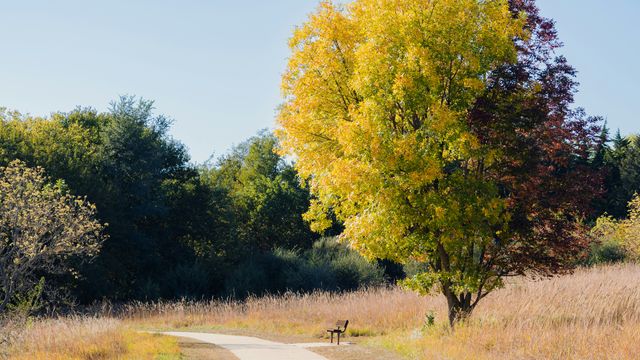
In a groundbreaking discovery, scientists from the Royal Botanic Gardens, Kew, and Queen Mary University of London have identified a new generation of ash trees in Britain that exhibit increased resistance to ash dieback, a devastating disease caused by the fungus Hymenoscyphus fraxineus. This finding offers renewed hope for the preservation of ash trees across the British landscape.
The study, recently published in the journal Science, highlights the role of natural selection in the evolution of resistance among ash trees. Researchers have found that natural selection is acting on the ash DNA at thousands of locations, driving this evolutionary change. This discovery aligns with long-standing predictions of Darwinian theory, showcasing natural selection’s impact on genetic traits.
The Impact of Ash Dieback
Ash dieback first appeared in Britain in 2012, leading to an emergency COBRA meeting due to its potential impact on the countryside. The disease has since caused significant damage, with predictions suggesting that up to 85% of ash trees could succumb to the infection. Despite these dire forecasts, none of the trees have shown complete immunity until now.
The new research involved comparing the DNA of ash trees that established before and after the fungal invasion. The results revealed subtle yet significant shifts in the frequencies of DNA variants associated with tree health, suggesting that the younger generation of ash trees may possess greater resistance than their predecessors.
Natural Selection in Action
This research provides a tangible example of natural selection at work, as theorized by Charles Darwin. It also demonstrates selection on a trait influenced by numerous genes, a phenomenon that has been difficult to prove in real-world scenarios.
“A tragedy for the trees has been a revelation for scientists: allowing us to show that thousands of genes are contributing to the ash trees’ fightback against the fungus,” commented Professor Richard Nichols, Professor of Evolutionary Genetics at Queen Mary University of London.
Dr. Carey Metheringham, whose PhD research included this study, noted that while natural selection is helping future generations of ash trees, it may not be sufficient to produce fully resistant trees. The genetic variation within the ash population might be too low, and as the trees become scarcer, the rate of selection could slow. Human intervention, such as selective breeding and protection from deer grazing, may be necessary to expedite evolutionary change.
Comparisons and Future Prospects
Professor Richard Buggs, Senior Research Leader at the Royal Botanic Gardens Kew, emphasized the significance of these findings in contrast to the fate of elm trees in Britain, which have struggled to evolve resistance to Dutch elm disease. The abundance of seedlings produced by ash trees provides a larger genetic pool for natural selection to act upon, resulting in a more resistant population.
“Lots of textbooks about evolution have hypothetical examples of natural selection driving change in quantitative traits, but these are hard to prove in real life cases. Here, we provide a real example which is characterized at the DNA level,” Buggs added.
The study, titled “Rapid polygenic adaptation in a wild population of ash trees under a novel fungal epidemic,” offers a real-world demonstration of DNA-level evolution and highlights the potential for nature to adapt to environmental challenges. However, the researchers caution that continued monitoring and intervention may be necessary to ensure the survival of ash trees in Britain.
Implications for Conservation
The findings underscore the importance of integrating scientific research with conservation efforts. By understanding the genetic mechanisms behind disease resistance, conservationists can develop more effective strategies to protect vulnerable species. The study also serves as a reminder of the resilience of nature and the potential for recovery even in the face of significant ecological threats.
As the scientific community continues to explore the genetic basis of resistance in ash trees, the hope is that similar approaches can be applied to other species facing threats from diseases and environmental changes. The research not only provides a beacon of hope for the future of ash trees but also reinforces the critical role of evolutionary biology in addressing contemporary conservation challenges.






